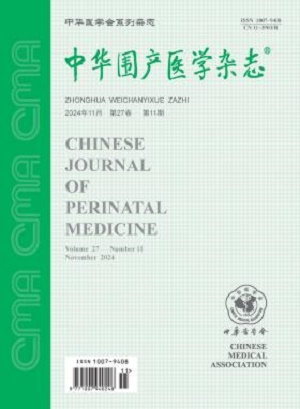宫内输血围手术期管理进展
Q4 Medicine
引用次数: 0
摘要
随着中国胎儿医学的快速发展,宫内输血作为一种在某些情况下的有效治疗方法,越来越受到人们的关注。除了常见的红细胞异体免疫外,宫内输血的适应症还包括细小病毒B19感染、母胎输血综合征、双胎贫血-红细胞增多症序列、胎盘绒毛膜血管瘤和胎儿骶尾畸胎瘤。根据胎龄、胎盘位置和胎儿水肿的有无,宫内输血推荐采用脐静脉输注或腹腔输注。然而,不建议脐动脉和心内输血。为减少宫内输注并发症,建议常规胎心镇痛,避免穿刺脐动脉,术前采用肝内脐静脉输注。胎儿大脑中动脉收缩压峰值速度(MCA-PSV) >为中位数(MOM)的1.5倍,1.69 MOM可作为第一次和第二次宫内输血的良好指标。对于第三次及以后的输血,建议用胎儿血红蛋白下降率来预测输血时机。关键词:输血;宫内;围手术期处理;胎儿血红蛋白本文章由计算机程序翻译,如有差异,请以英文原文为准。
Advances in perioperative management of intrauterine blood transfusion
With the fast development of fetal medicine in China, intrauterine transfusion, which is regarded as an effective treatment in certain conditions, has attracted more and more attention. In addition to the common seen red blood cell alloimmunization, the indications of intrauterine transfusion include parvovirus B19 infection, maternal-fetal blood transfusion syndrome, twin anemia-polycythemia sequence, placental chorionic hemangiomas and fetal sacrococcygeal teratomas. The recommended approach for intrauterine transfusion is umbilical vein or intraperitoneal transfusion depending on the gestational age, placental location, and presence of absence of fetal edema. However, umbilical artery and intracardiac transfusion are not recommended. In order to reduce the complications of intrauterine transfusion, routine fetal analgesia, avoidance of umbilical artery puncture and prior use of intrahepatic umbilical vein transfusion are recommended. Fetal middle cerebral artery-peak systolic velocity (MCA-PSV) >1.5 multiple of median (MOM) and 1.69 MOM can be a good indicators for the first and second intrauterine transfusions, respectively. For the third and subsequent transfusions, the rate of fetal hemoglobin decline is recommended to predict the timing of transfusion.
Key words:
Blood transfusion, intrauterine; Perioperative period; Fetal hemoglobin
求助全文
通过发布文献求助,成功后即可免费获取论文全文。
去求助
来源期刊

中华围产医学杂志
Medicine-Obstetrics and Gynecology
CiteScore
0.70
自引率
0.00%
发文量
4446
期刊介绍:
Chinese Journal of Perinatal Medicine was founded in May 1998. It is one of the journals of the Chinese Medical Association, which is supervised by the China Association for Science and Technology, sponsored by the Chinese Medical Association, and hosted by Peking University First Hospital. Perinatal medicine is a new discipline jointly studied by obstetrics and neonatology. The purpose of this journal is to "prenatal and postnatal care, improve the quality of the newborn population, and ensure the safety and health of mothers and infants". It reflects the new theories, new technologies, and new progress in perinatal medicine in related disciplines such as basic, clinical and preventive medicine, genetics, and sociology. It aims to provide a window and platform for academic exchanges, information transmission, and understanding of the development trends of domestic and foreign perinatal medicine for the majority of perinatal medicine workers in my country.
 求助内容:
求助内容: 应助结果提醒方式:
应助结果提醒方式:


